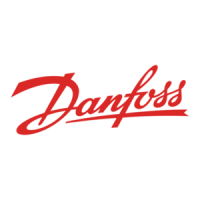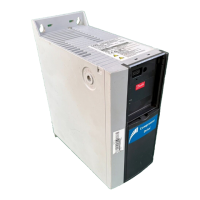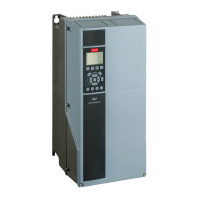1 Introduction
1.1 Purpose of the Manual
The VLT
®
CANopen MCA 105 Programming Guide provides
information about conguring the system, controlling the
frequency converter, parameter access, programming, as
well as troubleshooting.
The programming guide is intended for use by qualied
personnel who are familiar with the VLT
®
frequency
converter, with CANopen technology, and with the PC or
PLC that is used as a master in the system.
Read the instructions before programming and follow the
procedures in this manual.
VLT
®
is a registered trademark.
1.2 Additional Resources
Resources available for the frequency converters and
optional equipment:
•
The VLT
®
AutomationDrive FC 301/FC 302
Operating Instructions provide the necessary
information for getting the frequency converter
up and running.
•
The VLT
®
AutomationDrive FC 301/FC 302 Design
Guide provides detailed information about
capabilities and functionality to design motor
control systems.
•
The VLT
®
AutomationDrive FC 301/FC 302
Programming Guide provides greater detail on
working with parameters and many application
examples.
•
The VLT
®
CANopen MCA 105 Installation Guide
provides information about installing the
CANopen and troubleshooting.
•
The VLT
®
CANopen MCA 105 Programming Guide
provides information about conguring the
system, controlling the frequency converter,
parameter access, programming, troubleshooting,
as well as some typical application examples.
Supplementary publications and manuals are available
from Danfoss. See vlt-drives.danfoss.com/Support/Technical-
Documentation/ for listings.
1.3
Document and Software Version
This manual is regularly reviewed and updated. All
suggestions for improvement are welcome. Table 1.1 shows
the document version and the corresponding software
version.
Edition Remarks Software version
MG92G1xx – –
Table 1.1 Document and Software Version
1.4 Product Overview
This programming guide relates to the CANopen interface.
Ordering number:
•
130B1103 (uncoated)
•
130B1205 (coated)
CANopen is a low-level network that standardises
communications between industrial devices (sensors, limit
switches, motor controls) and high-level devices
(controllers). CANopen follows the open systems intercon-
nection (OSI) model and is based on CAN technology for
media access control and physical signalling.
Congure CANopen systems to operate in a master-slave
or a distributed control architecture using peer-to-peer
communication. Up to 127 nodes in a multi-drop network
topology are supported. By using the same cable for
communication, the bus can power the communication
options directly. Nodes can be removed or inserted
without powering down the network.
Each node on the network has its own unique communi-
cation object identier (COB-ID) to distinguish it on the
network. The access control is based on the CSMA/CA
(carrier sense multiple access/collision avoidance) principle,
meaning that all nodes may have access to the network at
the same time. When 2 nodes attempt to get control of
the network bus simultaneously, the CAN protocol resolves
the issue by arbitration. In this way, collisions on the
network are avoided.
CANopen denes device proles for devices belonging to
specic classes. For other devices, dene a custom class to
make it CANopen compatible. All of the above enhances
the interchangeability and interoperability of the network.
Introduction Programming Guide
MG92G102 Danfoss A/S © 06/2015 All rights reserved. 3
1 1

